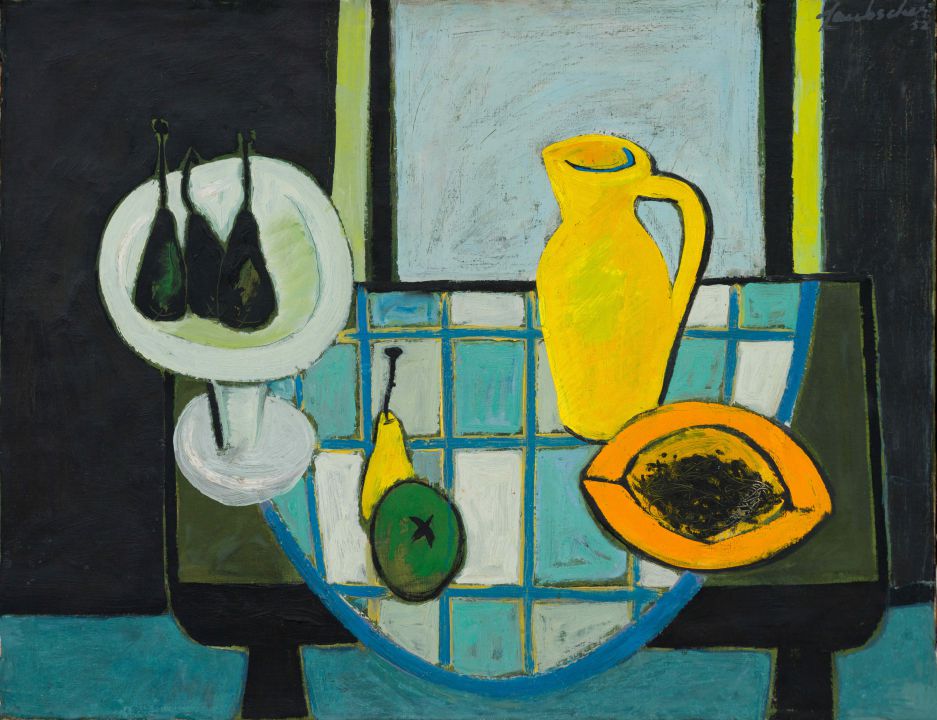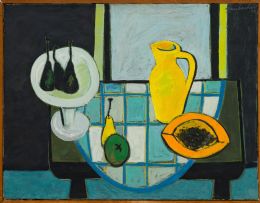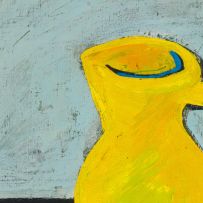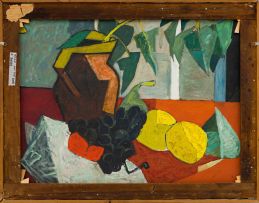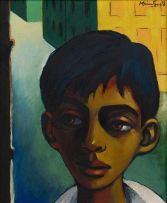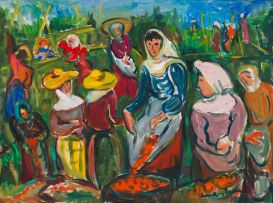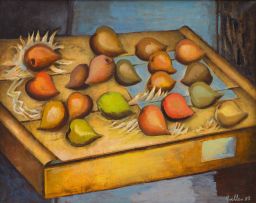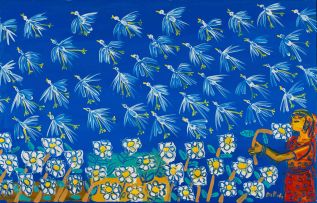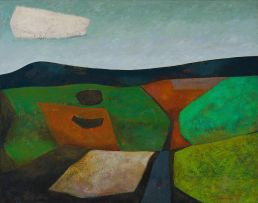Still Life with Papaya, recto; Still Life with Lemons, verso
Erik Laubscher
About this Item
signed and dated 52; inscribed with the artist's name and the title on a Pretoria Art Museum label on the reverse
Notes
Erik Laubscher's paintings from the 1950s mark a distinctive phase in his early biography. Notwithstanding their formal distinctiveness within his larger corpus of mostly landscape paintings, his School of Paris still lifes are greatly prized by collectors. Laubscher apprenticed with painter Maurice van Essche in Cape Town before completing his basic art studies in London in the late 1940s. In 1950 he moved to Paris where he studied at the Académie Montmartre under painter Fernand Léger. Laubscher quickly synthesised the various influences of his French education: Leger's monumental forms, Braque's flattened planarity, Picasso's cubist innovations and Matisse's opulent colouration and clearly delineated forms.
While in Paris Laubscher fell strongly under the influence of Bernard Buffet, a key figure in the voguish 'miserabilist' school of French expressionist painting. The present lot is revealing of Laubscher's infatuation with Buffet, both in his choice of subject (a still life with pears in the recto composition) and sense of colour (notably the greys and diminished greens). The assembly of attenuated, teardropshaped pears displayed on a footed white platter on a patterned cloth are also a typical Buffet gesture. Laubscher's brand of new realism was, however, never as graphic or reduced as that of Buffet, whose early post-war works displayed an existential barrenness that Laubscher never aspired to. The abundant colour on the right of the picture plane, notably figured in the yellow jug, is a marker of an internal optimism that Laubscher fully revealed in his mature landscape pieces.
Laubscher approached his compositions with jouissance and vigour. This is evident in his sgraffito detailing of the pitted interior of the papaya in the recto composition, which features knotted lines scratched into the black paint, as well as the composition with lemons, grapes and pears on the verso. This cubist rendering, with its breezily detailed white cloth, is far more crowded than the gracefully achieved recto composition. It is nonetheless revealing of Laubscher's influences and evolution. Writing in the catalogue accompanying Laubscher's 1994 retrospective at the University of Stellenbosch Museum, director Muller Ballot noted that the painter's works from the 1950s prepared the way for what became hallmarks of his practice: the 'responsible simplification' of forms, expressive use of colour and 'imaginative absorption' of the essential characteristics of whatever he painted.1
Sean O'Toole
1 Muller Ballot (1994). Erik Laubscher, Stellenbosch: University of Stellenbosch, page 8.
Literature
Hans Fransen (2009) Erik Laubscher: A Life in Art, Stellenbosch: SMAC ART Gallery, illustrated in black and white on page 49 in the background of a photograph of the artist with Paul du Toit.
